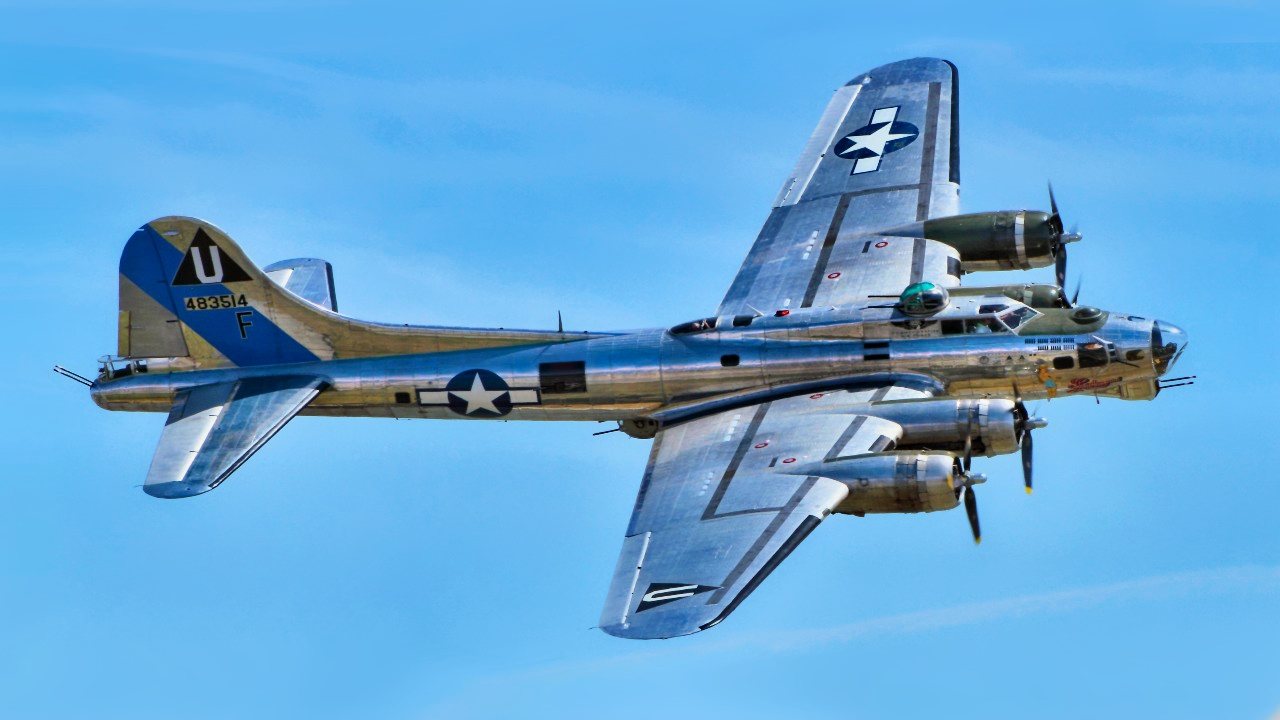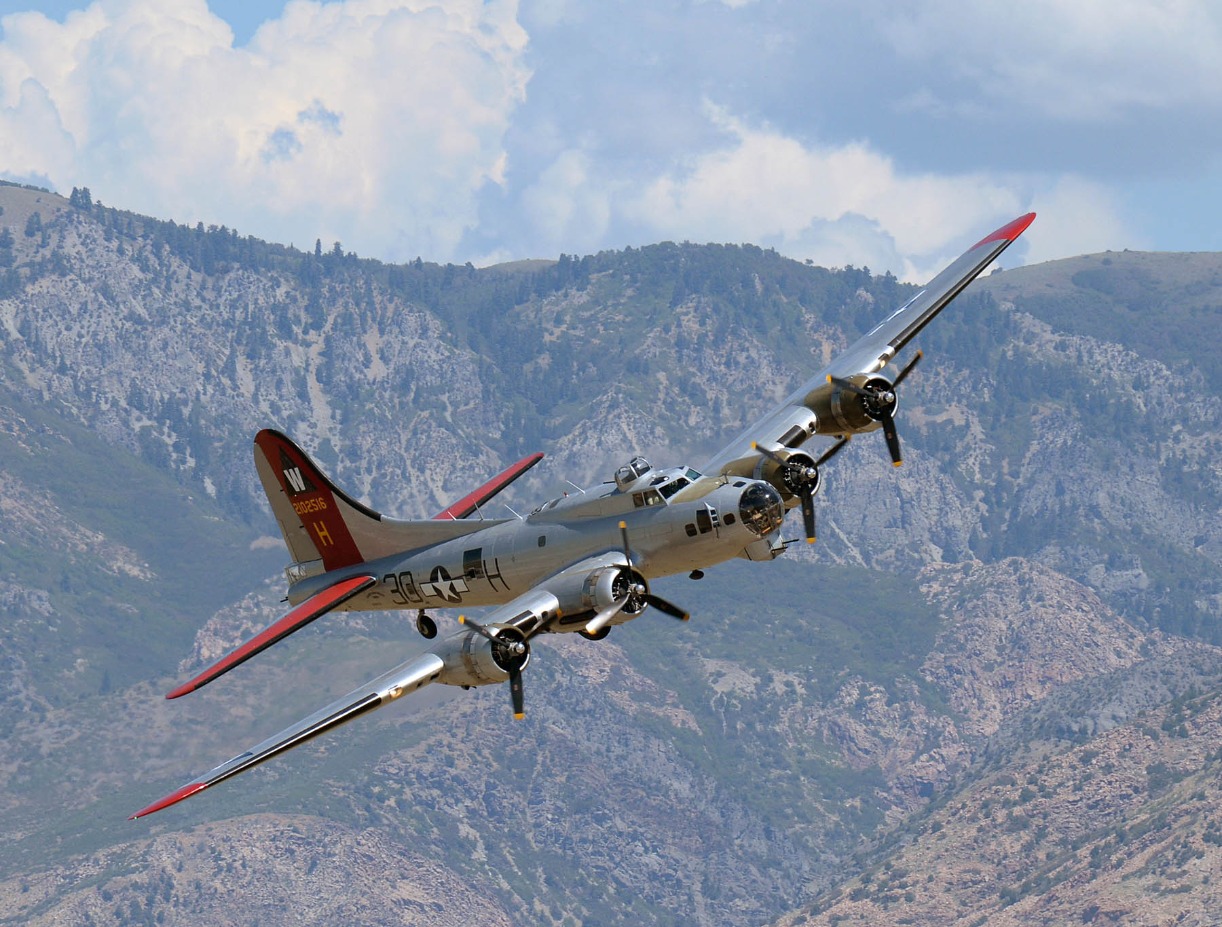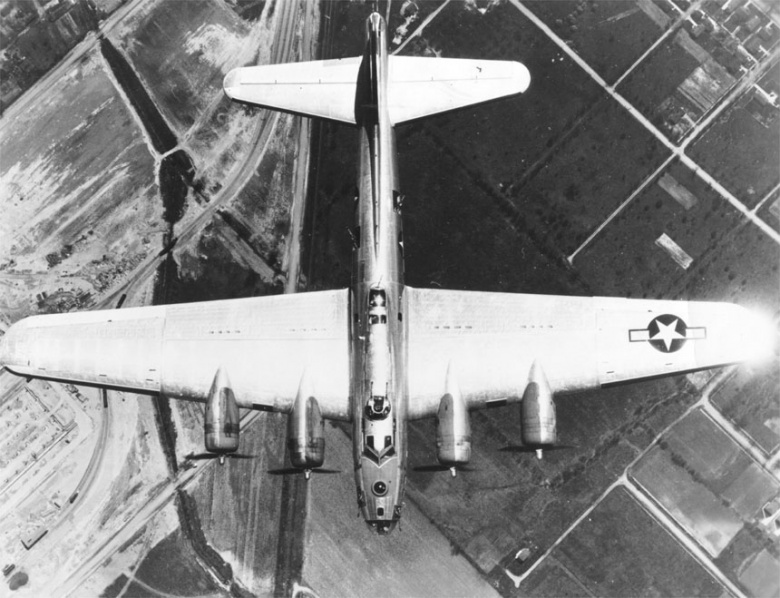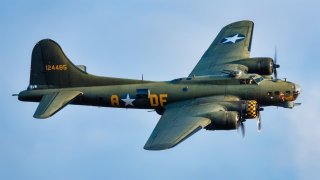B-17 Flying Fortress: The Bomber That Won World War II
The B-17 Flying Fortress earned its legendary status as the bomber workhorse against Germany and occupied territories during the Second World War.
What You Need to Know: The B-17 Flying Fortress earned its legendary status as the bomber workhorse against Germany and occupied territories during the Second World War.

-Notably, the B-17 dropped more ordnance than any other aircraft during the war. Perhaps the greatest attributes of the platform included its ability to sustain heavy damage in battle and its overwhelming firepower.
-While the Flying Fortress was eventually replaced by its B-29 successor, the bomber remains one of the most revered of its kind to this day.
Introducing the B-17 Flying Fortress:
During WWII, the U.S. Army Air Corps recognized the need for a new bomber able to reinforce the service’s fleets in Hawaii, Panama and Alaska. This replacement aircraft for the Martin B-10 was expected to be able to fly at faster speeds and carry a heavier weapons load than its predecessor.
Ultimately, the B-17 prototype was developed by manufacturer Boeing to fulfill these requirements. When the prototype, designated Model 299, first took to the skies in the mid-1930’s in Washington, one reporter noted in a photo caption of the airframe that it looked like a “15-ton flying fortress.” Boeing quickly trademarked this nickname.

During the test flight, the prototype proved it could fly over 2,000 miles without needing to refuel in nine hours. This type of range was viewed as a necessary capability for cross-continental raids during the war.
Although this initial test flight was deemed a success, less than two days later Model 299 crashed after its elevator gust-lock remained engaged during landing. As a result of this incident, Boeing only secured a contract for 13 B-17s instead of the planned procurement of sixty.
Specs & Capabilities:
In addition to its impressive range, the B-17 could lug a 6,000-pound payload capable of carrying out strategic bombing of targets deep inside enemy territories. The bomber also featured improved altitude over its predecessors, able to fly at a service ceiling of up to 35,000 feet depending on bomb load.
This height enabled the B-17 to fly far above the most advanced anti-aircraft fire at the time. The Flying Fortress could hold a crew of 10 and was warmed with 10 .50-caliber machine guns.

Service History:
The B-17 platform played an instrumental role during WWII. As detailed by the National World War II Museum, “The first B-17 raid in Europe took place on August 17, 1942, when 12 planes attacked the railroad marshaling yards in Rouen, France. American bomber numbers continued to build in Europe and attacks (and losses) began to build up. While the US Fifteenth Air Force also had B-17s, the most famous group to fly them during the war was the US Eighth Air Force based out of England.”
Throughout the war, the Flying Fortress was primarily deployed in the daytime Allied strategic bombing campaign over Europe, which coincided with the Royal Air Force’s night time bombing raids attacking Germany. In total, more than 64,000 tons of ordnance were dropped from B-17s in this period.
Even after the B-29 Stratofortress replaced the B-17 by the end of the war, the Flying Fortress remains symbolic of America’s aerial prowess during WWII today.
About the Author: Maya Carlin, Defense Expert
Maya Carlin, National Security Writer with The National Interest, is an analyst with the Center for Security Policy and a former Anna Sobol Levy Fellow at IDC Herzliya in Israel. She has by-lines in many publications, including The National Interest, Jerusalem Post, and Times of Israel. You can follow her on Twitter: @MayaCarlin.
Image Credit: Creative Commons.


